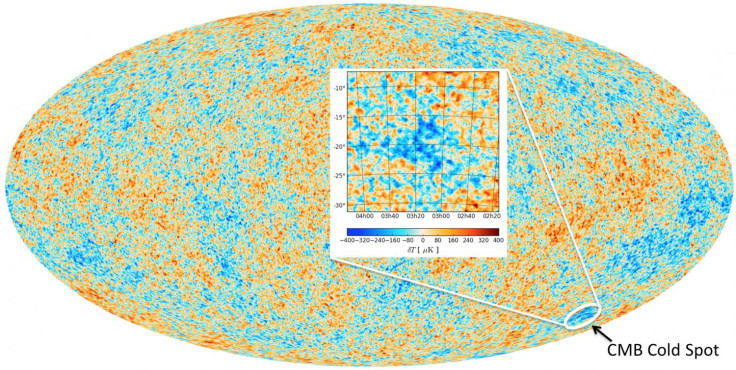Evidence of multiverse? 'Cold Spot' could be sign we just bumped into another parallel universe
The anomaly of the universe's Cold Spot could be explained by a collision with another universe.

A huge cold region of the universe spanning billions of light years is not a blank patch mostly empty of galaxies, astrophysicists have discovered. The finding implies that the universe's Cold Spot could be the first hard evidence that our universe is just one of many.
The Cold Spot could have been caused by a collision between our universe and another bubble universe, author of a study on the Cold Spot, Tom Shanks of Durham University, told IBTimes UK. This would leave a particular signature in the cosmic microwave background radiation. If this signature is found, it could be the taken as the first hard evidence that we live in a multiverse.
The other main explanation for the Cold Spot is chance, but this is quite an unlikely option, Shanks said.
"I have to balance the 1-in-50 chance that standard cosmology could produce this feature with the huge implications for physics if the bubble collision interpretation is correct - with implications for the multiverse, string theory, comsological constant and so on. Basically we need further evidence from present and future cosmic microwave background experiments to distinguish these two possibilities," Shanks said.
"What can be said with certainty is that our result means that there is now no possibility of explaining the Cold Spot by a foreground void in the galaxy distribution."
The Cold Spot is an area where cosmic microwave background radiation – leftover radiation from the Big Bang – is weak. This makes it significantly colder than the average temperature for the universe. Across most areas of the sky, the temperature due to this radiation is about 2.73C above than absolute zero (-270C). But the Cold Spot is 0.00015C colder than this.
Previous theories suggested that the difference in temperature was because the Cold Spot was a ''supervoid'' with very few galaxies in it.

But analysis of galaxy redshift using new high-resolution data has shown that the Cold Spot has a similar structure to the rest of the universe in terms of its galaxies.
Shanks and his colleagues looked at the redshifts of 7,000 galaxies using data from the Anglo-Australian Telescope. They found that the Cold Spot has the ordinary ''soap bubble'' structure of clusters of galaxies surrounding smaller voids. With the supervoid option ruled out, the researchers are now opening the debate of more 'exotic' explanations for the phenomenon.
The results are published in a paper in the Monthly Notices of the Royal Astronomical Society.
© Copyright IBTimes 2025. All rights reserved.




















